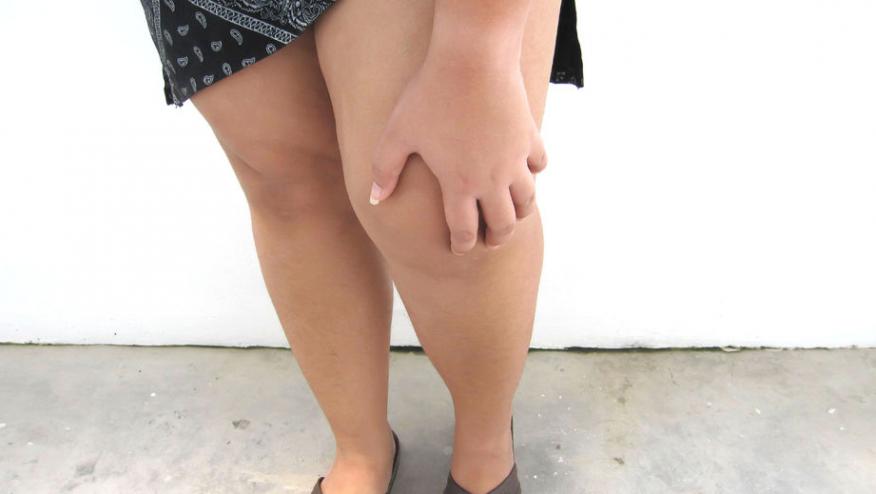Diabetes in OA: Pain Is Worse Save

Among patients with knee osteoarthritis (OA), pain was greater for those with coexisting diabetes mellitus (DM), and this association was independent of obesity and radiographic severity, European researchers found.
In an analysis that adjusted for age, sex, body mass index (BMI), and Kellgren-Lawrence grade of radiographic severity, pain was more severe on the activity-based Knee injury and Osteoarthritis Outcome Score (KOOS) for patients with DM compared with those without DM (β = -4.72, 95% CI -7.22 to -2.23, P<0.001), according to Annett Eitner, PhD, of Friedrich Schiller University in Jena, Germany, and colleagues.
In addition, pain was worse for patients with DM on an 11-point numerical rating scale of non-activity-related pain (β = 0.42, 95% CI 0.04 to 0.80, P=0.31), the researchers reported online in Arthritis Care & Research.
Pain intensity has been reported to be greater in OA patients who have DM, possibly because of increased systemic and local inflammation, microvascular changes, and pain sensitization alterations. Moreover, hyperglycemia may have adverse influences including mitochondrial dysfunction, hypoxia, and release of reactive oxygen specials in peripheral tissues, potentially contributing to abnormal nociception and peripheral neuropathy.
But identifying the precise mechanisms of OA pain can be difficult, as pain severity doesn't always align with the degree of radiographic change and BMI can be a confounder because of mechanical stress on weight-bearing joints as well as upregulation of proinflammatory cytokines from adipose tissue, the researchers explained.
"Given that previous studies into the relationship between DM and OA pain were of moderate sample size only and did not adjust for radiographic OA severity, the current study used a large observational cohort to test the hypothesis that OA pain sensation in individuals with DM is stronger than in non-DM controls, independently of BMI and radiographic disease status," Eitner and colleagues wrote.
For the research, they analyzed data from 2,481 patients enrolled in the Osteoarthritis Initiative, a longitudinal cohort study of individuals with symptomatic OA ages 45 to 79. Of these, 202 (8.14%) reported having been diagnosed with DM.
Compared with the patients who did not have diabetes, those with DM were older (65 vs 62 years, P=0.032), had higher BMI (31.6 vs 28.6 kg/m2, P<0.001), and had higher comorbidity scores (1 vs 0, P<0.001). Comorbidities in the DM group included heart failure, impaired kidney function, and cancer.
Kellgren-Lawrence radiographic severity categories were grade 1 in 27%, grade 2 in 42.2%, grade 3 in 23.1%, and grade 4 in 7.7%.
"Importantly," pain was worse in diabetic patients with the higher Kellgren-Lawrence grades, the authors noted. Patients with DM and the most severe radiographic grade (4), had a difference of 11.1 points compared with non-DM patients (P=0.014) and a difference of 2.5 points on the numerical rating scale of pain (P=0.013).
On other outcomes, patients with severe OA and DM had a 49-point difference on the Physical Activity Score for the Elderly compared with nondiabetic patients (P=0.030) and a difference of 7.1 points on the Short Form-12 health assessment physical summary score (P=0.30).
On the multivariate linear regression analysis that adjusted for age, sex, BMI, and Kellgren-Lawrence grade, factors other than pain severity that were significantly different between patients with and without DM were as follows:
- Short Form-12 physical summary score, β = -3.49 (95% CI -4.73 to -2.25, P<0.001)
- Short Form 12 mental summary score, β = -1.42 (95% CI -2.57 to -0.26, P=0.016)
- Center for Epidemiological Studies Depression Scale, β = 1.08 (95% CI 0.08 to 2.08, P=0.035)
After additional adjustment for pain medication use, comorbidities, and number of painful joints, these factors remained statistically significant:
- KOOS pain, β = -3.32 (95% CI -5.62 to -1.02, P=0.005)
- Short Form-12 physical summary score, β = -2.63 (95% CI -3.81 to -1.45, P<0.001)
- Short Form-12 mental summary score, β = -1.19 (95% CI -2.36 to -0.03, P=0.045)
This analysis confirmed that not only do patients with OA and DM experience worse pain than those without DM, but they also have worse physical and mental health status, the researchers observed.
"The inclusion of additional potential confounders such as other diagnosed comorbidities, painful joints, and pain medication into the analysis confirms the presence of DM and worse KOOS pain scores of knee joints in OA-affected individuals," the team wrote.
"In summary, greater inflammation, alterations in nociceptive neurons, diabetic neuropathy, and psychosocial factors may cause the presence of DM to result in more knee pain, independent of elevated BMI and radiographic OA status," Eitner and co-authors concluded.
Limitations of the analysis, the team said, included the cross-sectional design and lack of details regarding DM history.
Disclosures
The authors received no funding for this work.
Primary Source - Arthritis Care & Research
Source Reference: Eitner A, et al "Impact of diabetes mellitus on knee osteoarthritis pain and physical and mental status: data from the Osteoarthritis Initiative" Arthritis Care Res 2020; doi:10.1002/acr24173.









If you are a health practitioner, you may Login/Register to comment.
Due to the nature of these comment forums, only health practitioners are allowed to comment at this time.